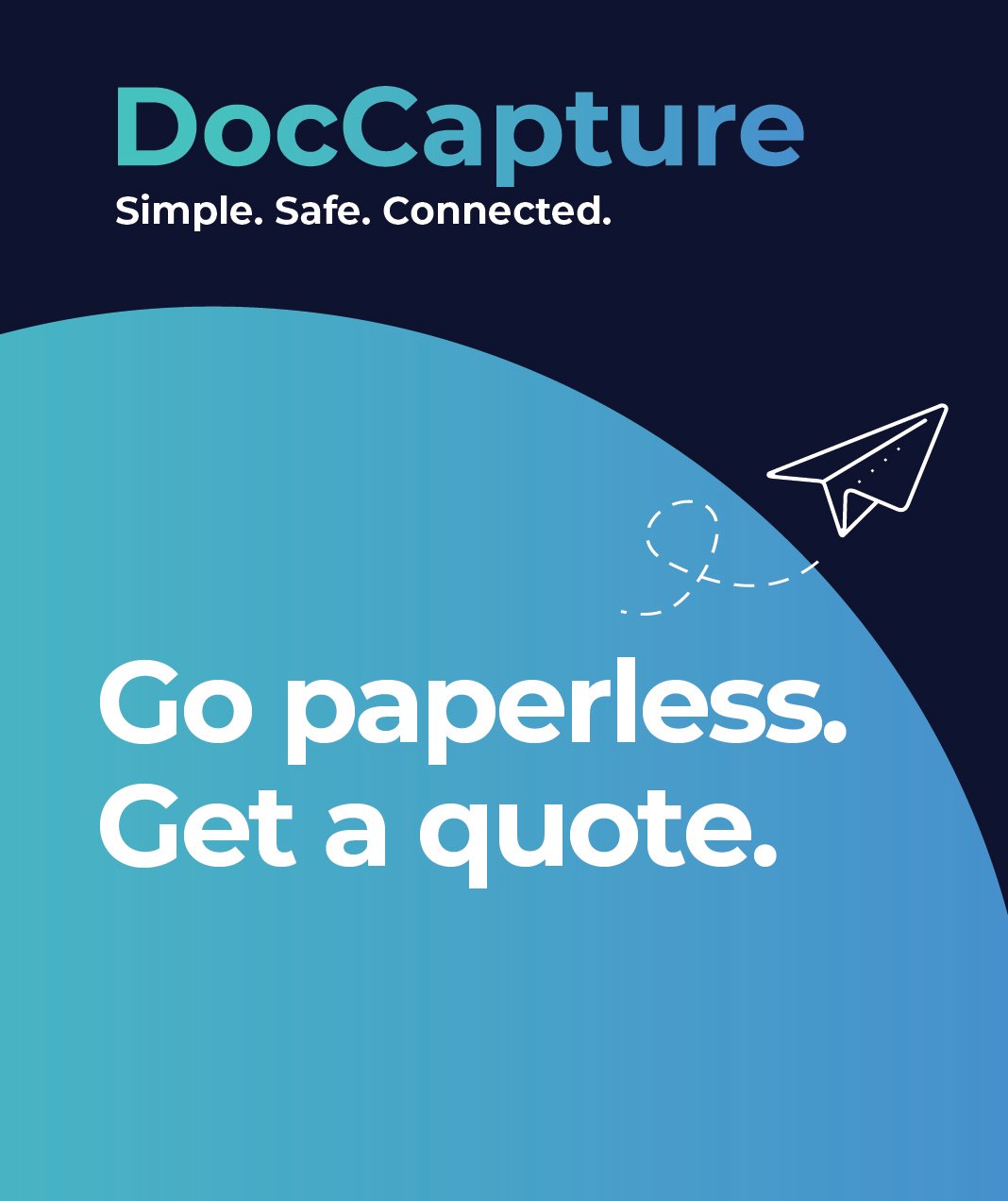How Document Scanning Enhances Regulatory Reporting Accuracy
Table of contents
For financial institutions, the stakes of regulatory compliance are higher than ever. One misstep in reporting—whether due to a misplaced document, a data entry error, or outdated filing systems—can result in crippling fines, damaged reputations, and operational disruptions. In fact, regulatory bodies such as the SEC and FINRA have issued billions in penalties over the last decade, much of it tied to inaccurate or delayed reporting.
At the heart of the problem lies the outdated reliance on physical documents and manual workflows. These systems are slow, error-prone, and ill-suited to today’s complex compliance demands. Financial leaders are under mounting pressure to modernize, but they need solutions that are low-risk, cost-effective, and proven to deliver results.
This is where enhancing regulatory reporting accuracy with document scanning becomes a game-changer. By digitizing documents and automating data capture, institutions can reduce compliance errors, speed up reporting cycles, and ensure regulatory alignment—all while improving operational efficiency.
Why Accuracy in Regulatory Reporting Is Critical
Financial institutions operate in one of the most heavily regulated environments in the world. From SEC and FINRA requirements in the U.S. to GDPR compliance in Europe, the burden of accurate, timely reporting is immense—and growing. Each regulation comes with its own set of documentation demands, timelines, and audit requirements, leaving little room for error.
Despite this, many institutions still rely on manual processes—faxed documents, printed forms, hand-entered data—that introduce delays and human errors into critical reporting functions. These outdated methods not only increase operational risk but also fail to meet the expectations of modern regulators who increasingly expect digital audit trails and real-time access to documentation.
Document digitization directly addresses these challenges. By converting paper records into searchable, standardized digital files, institutions reduce the chance of data loss, misfiling, or duplication. This not only supports better reporting accuracy but also aligns with the digital-first direction of financial regulation.
For a deeper dive into how digitization is reshaping compliance expectations, check out The Role of Document Scanning in Financial Services Regulation.
How Document Scanning Enhances Accuracy
Accurate regulatory reporting depends on the ability to retrieve and verify documents quickly, reliably, and without error. Document scanning significantly improves this process through multiple technology-driven advantages:
Standardization of Information
When physical documents are digitized, they are typically converted into consistent file formats with standardized naming conventions. This makes them easier to catalog, store, and retrieve—reducing the risk of misfiled records or inconsistent data entries across departments.
OCR and Metadata Tagging
Advanced Optical Character Recognition (OCR) technology extracts text from scanned documents, enabling automated indexing and metadata tagging. This dramatically lowers the risk of human error during data entry and ensures that important fields are captured accurately and consistently across reports.
Transparent Digital Audit Trails
Digital documents allow for the creation of complete audit trails—who accessed a file, when it was modified, and how it was used. This level of traceability simplifies compliance checks and makes it easier to demonstrate regulatory adherence during audits.
Together, these features not only reduce operational overhead but also establish a stronger foundation for compliance accuracy. To learn more about how this translates into real-world value, explore our overview of Financial Document Scanning.
Faster Reporting Cycles
In a regulatory environment where timelines are tight and penalties for delays are steep, speed is as important as accuracy. Document scanning plays a vital role in accelerating reporting cycles across financial institutions by enabling real-time access and seamless collaboration.
Instant Access Across Departments
Digitized documents can be securely accessed by compliance officers, legal teams, and IT departments simultaneously—without the delays of physical retrieval or interdepartmental bottlenecks. This supports faster reviews, approvals, and submissions.
Streamlined Workflows
Digital document management allows for automated routing and status tracking, eliminating the slow, manual handoffs that plague paper-based systems. This significantly cuts down the time required to prepare, verify, and file regulatory reports.
Better Integration with Compliance Tools
Scanned documents can be easily integrated with compliance management systems, data analytics platforms, and regulatory reporting software, enabling more efficient processing and fewer redundancies. This integration leads to faster insights and more informed decision-making.
For an example of how document scanning supports operational efficiency, visit our blog on How Scanning Documents Can Save Financial Institutions Time and Money.
Lowering the Risk of Fines and Penalties
Regulatory fines often stem from two preventable issues: inaccurate data and incomplete documentation. Document scanning directly addresses both, offering a reliable way to reduce compliance risk across the board.
Ensuring Document Integrity
Digitized records eliminate the uncertainty of misplaced files, duplicate copies, or outdated versions. Scanning solutions preserve the original integrity of documents while enabling version control, which is essential during audits or regulatory reviews.
Secure Storage and Access
Physical records are vulnerable to theft, damage, or loss. Digital documents, when stored in secure, encrypted systems, are far more resilient. Most modern solutions offer bank-grade security features and role-based access controls to ensure only authorized personnel can view sensitive content.
Reduced Oversight and Audit Failures
When auditors can easily access complete, well-organized digital files—with clear metadata and timestamps—the risk of oversight or failure during a compliance review is drastically reduced. This results in fewer fines, less legal exposure, and greater peace of mind for compliance teams.
To see this in action, visit our related article: Financial Records in the Cloud: Safeguarding and Accessibility.
Addressing Common Objections
Despite the clear benefits, some financial institutions hesitate to adopt document scanning due to concerns about integration, security, or return on investment. Let’s address these common objections head-on.
Integration with Legacy Systems
One of the most frequent concerns is whether document scanning technology will work with existing infrastructure. DocCapture is built for seamless integration with legacy systems, ensuring that digitization enhances your current operations rather than disrupting them. Whether you're using older document management systems or custom compliance platforms, DocCapture’s flexible APIs and connectors ensure a smooth transition.
Data Security and Compliance
Security is non-negotiable in the financial sector. DocCapture employs high-grade encryption, multi-factor authentication, and compliance with financial industry standards such as SOC 2 and ISO 27001. You maintain complete control over data access, with audit-ready logs and granular permissions to protect sensitive information.
Return on Investment
Some decision-makers are cautious about the upfront cost. But the ROI is clear: by reducing manual labor, eliminating paper storage, speeding up reporting, and avoiding regulatory fines, the solution often pays for itself in the first year. It’s a strategic investment in both compliance and operational efficiency.
Conclusion
Regulatory reporting doesn’t have to be a source of stress—or risk. By enhancing regulatory reporting accuracy with document scanning, financial institutions can meet today’s compliance demands with greater speed, precision, and confidence. From reducing human error and accelerating workflows to securing sensitive data and avoiding costly penalties, document digitization is a practical, proven path to better compliance management.
DocCapture helps financial institutions modernize their document handling processes without disrupting existing systems. Whether you're leading a compliance initiative or driving IT transformation, our secure, scalable solutions are designed to meet your unique needs.
Fill out our Get a Quote form to learn how DocCapture can help your team reduce compliance risk and boost operational efficiency. Or request a free demo to see how seamlessly our solutions integrate with your current systems.
Share this
You May Also Like
These Related Stories

Digitizing Nonprofit Records to Support Remote and Hybrid Teams

Meeting Grant Documentation Requirements with Scanned Records

